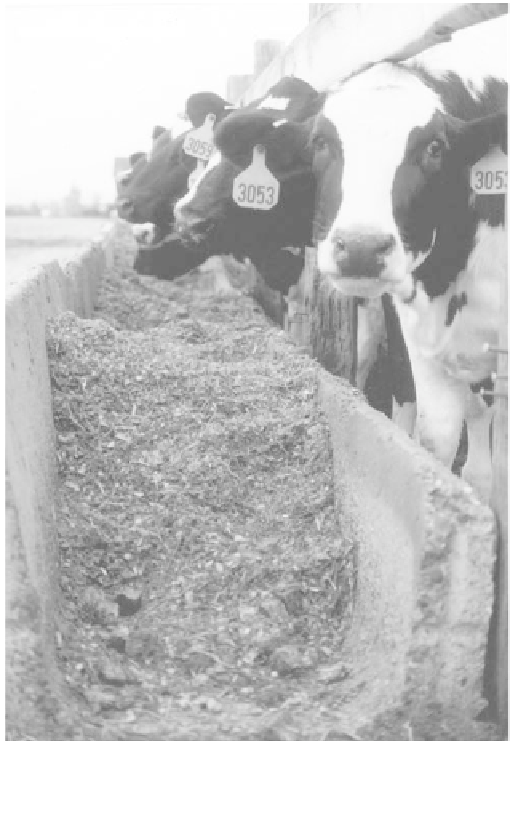Agriculture Reference
In-Depth Information
to develop a basis for more sustainable use of energy in
agriculture.
It is helpful, first of all, to distinguish between the
different types of energy inputs in agriculture. The primary
distinction is between energy inputs from solar radiation,
called
ecological energy inputs
, and those derived from
human sources, called
cultural energy inputs
. Cultural
energy inputs can be further divided into biological inputs
and industrial inputs. Biological inputs come directly from
organisms and include human labor, animal labor, and
manure; industrial inputs of energy are derived from fossil
fuels, radioactive fission, and geothermal and hydrological
sources.
It is important to note that even though we are refer-
ring to all these sources of energy as “inputs,” cultural
energy of either form can be derived from sources within
a particular agroecosystem, making it not an input at all
in the sense that we have been using the term. Such “inter-
nal inputs” of energy include the labor of farm residents,
the manure of on-farm animals, and energy from on-farm
windmills or wind-driven turbines (Figure 18.3).
C
ULTURAL
E
NERGY
I
NPUTS
AND
H
ARVEST
O
UTPUT
From the standpoint of sustainability, the key aspect of
energy flow in agroecosystems is how cultural energy is
used to direct the conversion of ecological energy to
biomass. The greater the modification of natural pro-
cesses that humans try to force on the environment in
the production of food, the greater the amount of cultural
energy required. Energy is needed to maintain a low-
diversity system, to limit interference, and to modify the
physical and chemical conditions of the system in order
to maintain optimal growth and development of the crop
organisms.
Larger inputs of cultural energy enable higher produc-
tivity. However, there is not a one-to-one relationship
between the two. When the cultural energy input is very
high, the “return” on the “investment” of cultural energy
is often minimal. Since the output of an agroecosystem
can be measured in terms of energy, we can evaluate the
efficiency of energy use in the agroecosystem with a sim-
ple ratio: the amount of energy contained in the harvested
biomass compared to the amount of cultural energy
required to produce that biomass. Across all the world's
agroecosystems, this ratio varies from one in which much
more energy comes out than is put in to one in which the
energy inputs are larger than the energy output.
Nonmechanized agroecosystems (e.g., pastoralism or
shifting cultivation) that use only biological cultural
energy in the form of human labor are able to realize
returns that vary from 5 to nearly 40 cal of food energy
for each calorie of cultural energy invested. Permanent
farming systems using draft animals have a higher input of
cultural energy, but because this greater energy investment
FIGURE 18.2
Dairy cows fed on concentrated diets to increase
milk production.
Corn silage, pelletized alfalfa, and other sup-
plements increase the energy cost of producing dairy products.
the feed, yielding an overall efficiency of only 0.004%
(Figure 18.2).
Open-range livestock must be considered somewhat
differently, since they can graze on land that might not be
suitable for other forms of agriculture, and consume for-
age directly from a natural ecosystem or low energy-
requiring pasture systems. They can transform the energy
contained in biomass that humans cannot consume
directly.
ENERGY INPUTS IN FOOD PRODUCTION
Although all the energy in the food we consume comes
originally from the sun, additional energy is needed to
produce the food in the context of an agroecosystem. This
additional energy comes in the form of human labor, ani-
mal labor, and the work done by machines. Energy is also
required to produce the machines, tools, seed, and fertil-
izer, to provide irrigation, to process the food, and to
transport it to market. We must examine all these energy
inputs to understand the energy costs of agriculture and

Search WWH ::

Custom Search